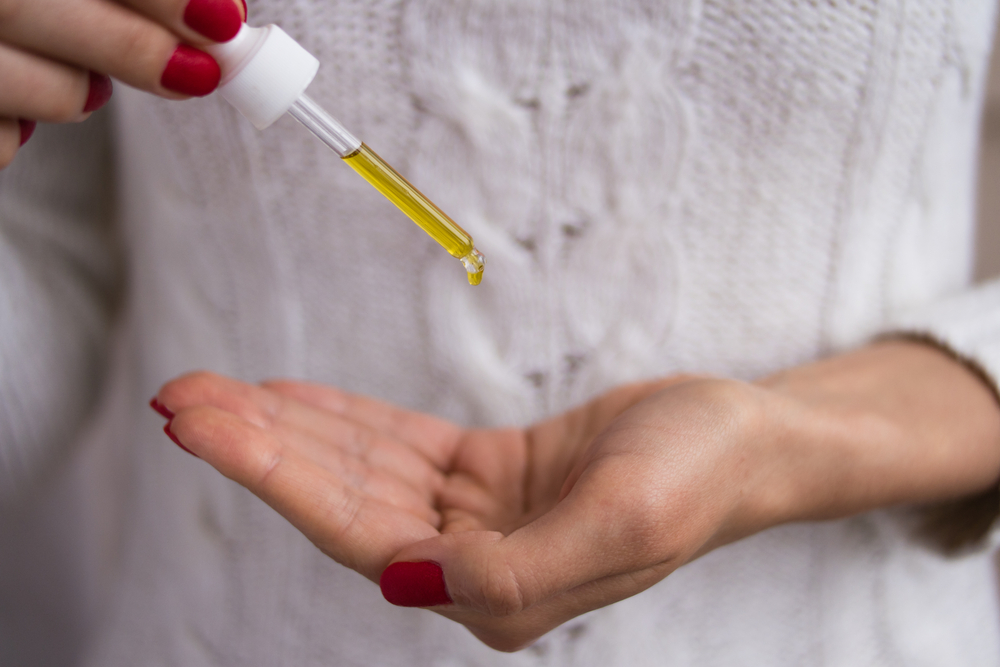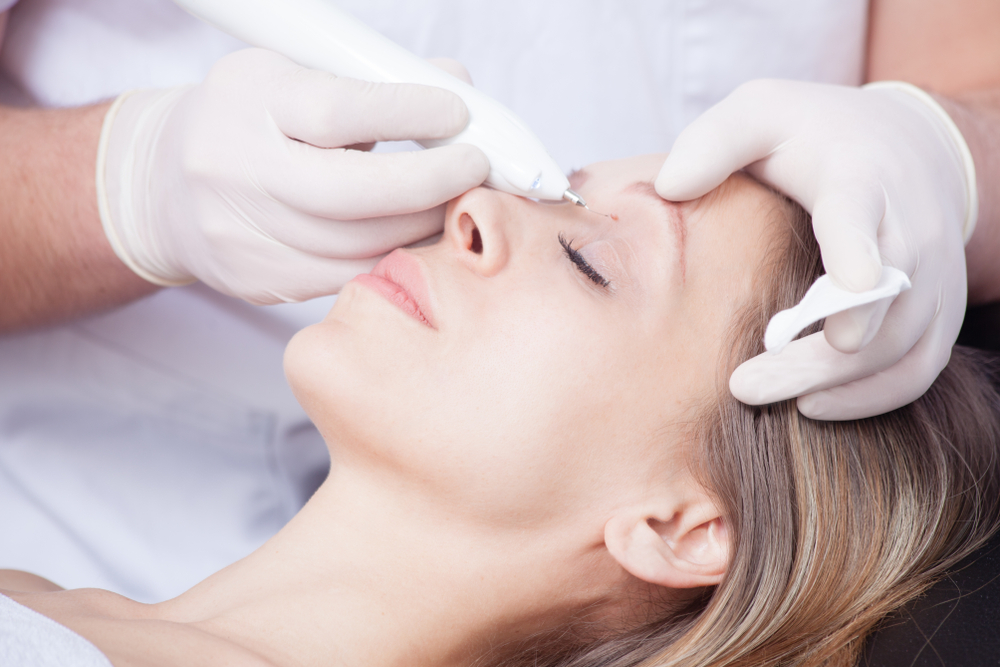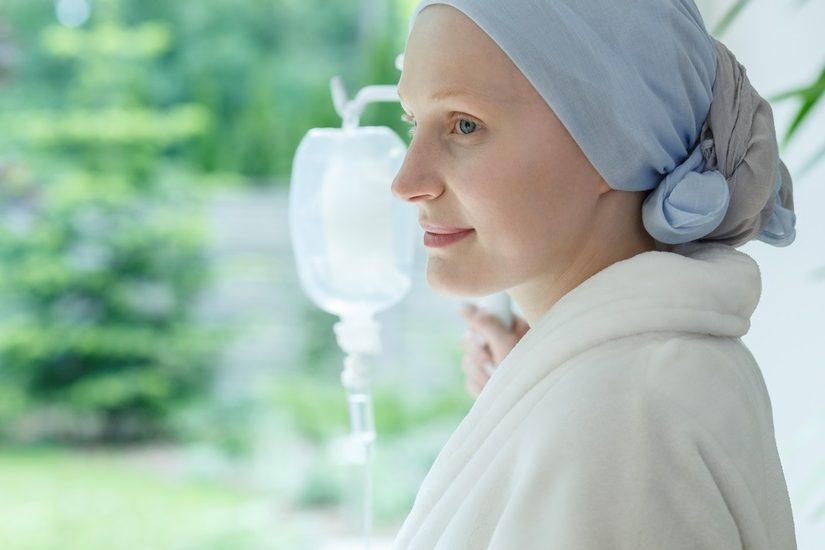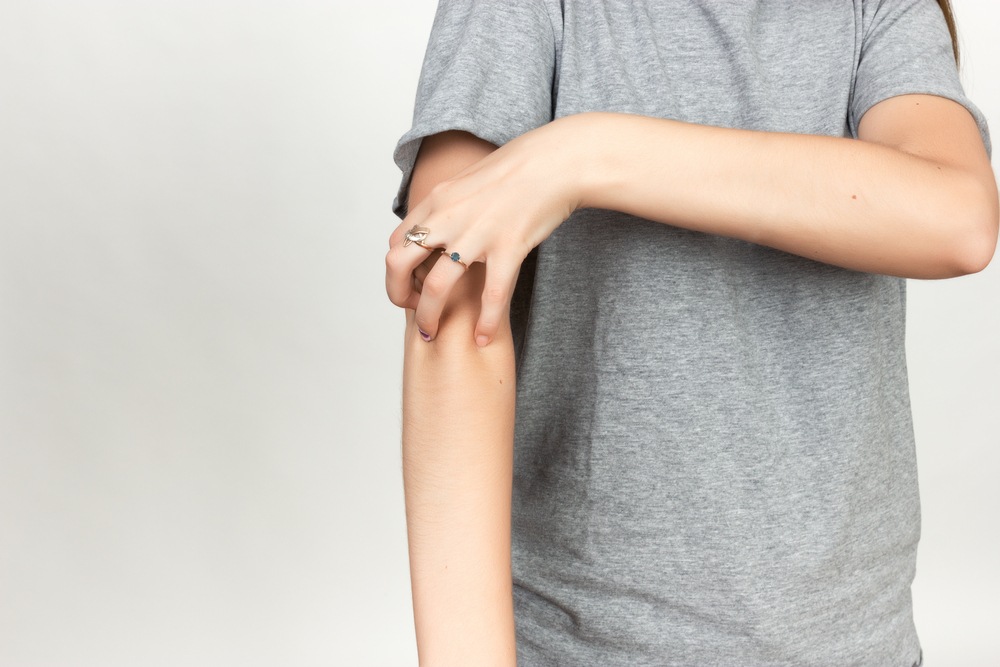- Hyperpigmentation is a darkening of the skin caused by sun exposure, inflammation, or hormonal changes.
- Kojic acid is a natural skin lightening agent derived from fungi that inhibits excess melanin production.
- The substance is both safe and effective at concentrations of 1% or less.
Have you noticed dark spots on your face, whether from sun exposure, acne scars or hormonal changes? There are a multitude of products available that claim they can “bleach” those spots away – but they are not all created equal.
Kojic acid is a natural product that has gained popularity as a skin lightening agent. Here, we review the evidence to determine if this substance is both safe and effective.
What is kojic acid?
Kojic acid is a naturally occurring metabolite derived from fungi that inhibits the production of melanin pigments in the skin. It is a fermentation byproduct of saké (a Japanese wine made from rice) as well as soy sauce. The name “kojic acid” is derived from the Japanese word “koji,” which means steamed rice.
There are a number of therapeutic properties linked to kojic acid, including antifungal, antimicrobial, pain relief, insecticidal and antioxidant uses.
Cosmetic use of kojic acid as a skin lightener to treat hyperpigmentation is one of its most well-known applications. Other dermatologic products containing kojic acid are used to treat acne or fungal infections, such as ringworm or athlete’s foot.
How does kojic acid combat hyperpigmentation?
Before delving into solutions, lets first define the problem. Hyperpigmentation is a condition characterized by a darkening of the skin caused by an increase in melanin, which is the substance that gives skin its pigment.
Hyperpigmentation can result from:
- Sun damage, which is the leading cause of dark spots in people with light skin.
- Inflammation due to acne, eczema or psoriasis, which is the leading cause of dark spots in people with darker skin.
- Melasma, a patchy darkening of the skin that often occurs in women due to circulating hormones — this may or may not be associated with oral contraceptives or pregnancy.
When combined, these causes of hyperpigmentation can compound the problem. For instance, melasma is often worsened by exposure to the sun.
Kojic acid inhibits excess melanin production, without affecting any of the lighter surrounding skin. It’s available in a number of different topical forms, including creams, lotion, serums, powders, cleansers, soaps, masks and chemical peels — usually in combination with other acids or ingredients.
Is kojic acid recommended by dermatologists?
We checked in with the experts to determine their stance on the benefits and safety of kojic acid used for hyperpigmentation.
Dr. Jennifer T. Haley, a board-certified dermatologist in practice with the Linder Dermatology and Skin Cancer Center in Scottsdale, AZ, noted that kojic acid “works very well as a mild skin lightening agent. It is safer to use long-term than hydroquinone.”
In terms of application, Dr. Haley recommends the use of kojic acid at night in conjunction with a broad-spectrum sunscreen every morning for patients with discoloration from acne or melasma.
“As with most skincare treatments, you should expect to see results after 6-8 weeks of consistent use,” she reports.
Dr. Rhonda Q. Klein, a board-certified dermatologist with Modern Dermatology in Westport, CT, confirms that “it will only lighten sun spots, hyperpigmentation and dark areas — not normal skin. Thus, it is a very safe, well-tolerated, non-hydroquinone skin lightener that I frequently recommend.”
Dr. Klein also notes other interventions that may be used in conjunction with kojic acid: “There are many other ingredients used for skin lightening that are very safe — namely alpha and beta hydroxy acids, vitamins A, B, C, E, and tranexamic acid — and I often recommend a combination of medical-grade skin care, peels, or lasers to best lighten the skin and reduce age spots or melasma, depending on the skin condition.”
Is kojic acid safe?
You may come across online discussions on the safety of kojic acid that bring into question its potential to cause cancer. Although some safety issues were seen in animal studies when extremely high doses were used, there does not seem to be the same concern with low therapeutic doses in humans.
Not only do our dermatologists feel that this product is safe to recommend to their patients, but the Cosmetic Ingredient Review (CIR) Expert Panel has officially stated that “kojic acid is safe for use in cosmetic products up to a concentration of 1%.”
As such, you should ensure that the kojic acid product you use does not contain the ingredient in doses greater than 1%.
Are there any side effects?
As with many other natural products, kojic acid may cause a topical allergic reaction called ‘contact dermatitis.’ If this occurs, you should discontinue use and seek the advice of a dermatologist.
For sensitive skin types, experts recommend testing the product on a small patch of skin before applying more diffusely over a treatment area.
When used extensively over long periods of time, kojic acid may make the skin more sensitive to sunburns. It’s important for patients using this product to cover their skin and apply sunscreen frequently if they spend any extended periods of time in the sun.
What other skin lightening options are there?
There are a number of other topical products available, including prescription medication, over-the-counter ingredients, and natural remedies. Many have demonstrated benefits in the treatment of hyperpigmentation.
- Hydroquinone
The most frequently used over-the-counter and prescription skin lightening agent currently on the market is hydroquinone, which has a similar mechanism of action as kojic acid – it reduces melanin production.
Hydroquinone should be used at a concentration of 4% or less, unless otherwise prescribed by a dermatologist. The most common side effect is mild skin irritation.
Whether in an over-the-counter or prescription formulation, hydroquinone use should be monitored by a physician. People with dark skin (Fitzpatrick Skin Type IV to VI) should be seen every 3 months, while those with lighter skin (Fitzpatrick Skin Type I to III) only need to be monitored every 6 months.
- Natural products
There are many other natural ingredients used in skin lightening products, both in conjunction with kojic acid or as alternatives. Soy and niacinamide, a form of vitamin B3, both work to lighten skin by suppressing pigment. Ellagic acid, a natural antioxidant derived from strawberries, cherries and pomegranates, also serves the same function by inhibiting melanin production.
Lignin peroxidase, another enzyme derived from a fungus, lightens skin by breaking down melanin. Interestingly, it is also used to whiten paper. Arbutin, a natural derivative of hydroquinone found in blueberry, cranberry and bearberry, has a similar mechanism to hydroquinone, but may produce allergic reactions.
» Learn more about another powerful exfoliating ingredient, glycolic acid. It can brighten and smooth skin, fade sun spots, ease congestion, and soften fine lines.
When should I see a dermatologist?
Kojic acid is safe to use in concentrations of 1% or less to lighten skin if you suffer from hyperpigmentation, especially on the face.
However, your first step should be to seek the advice of a board-certified dermatologist. An expert can evaluate your skin and suggest a therapeutic plan of action that best suits your needs, without risking any negative reactions.
» More questions about hyperpigmentation and skin lightening treatments? Meet our medical review team to get online consultations.









